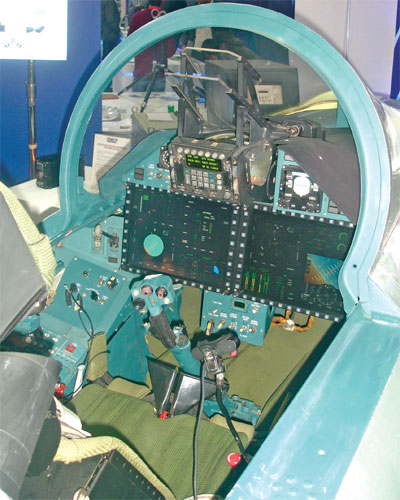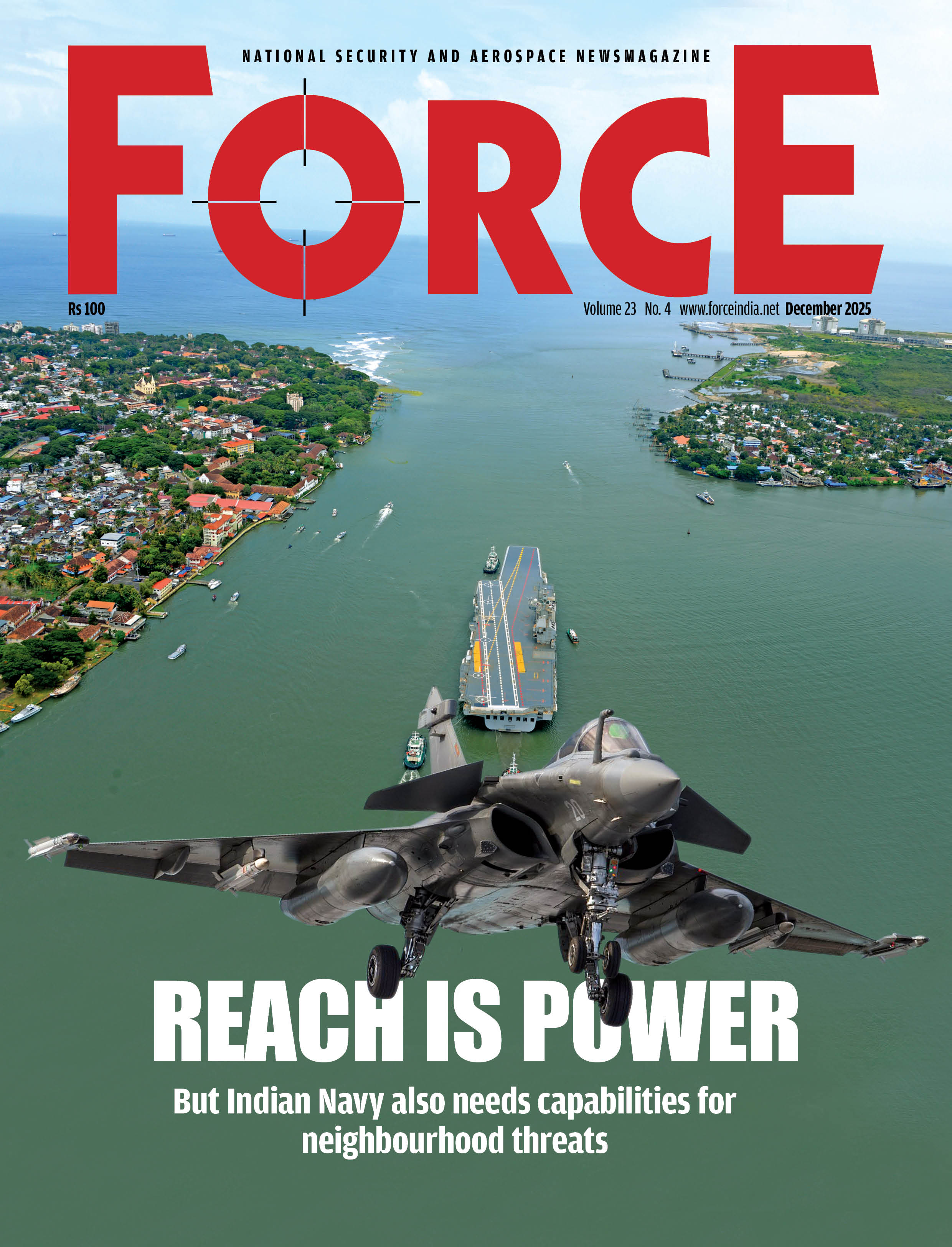Su-30MKI Upgrades Get Underway
Prasun K. Sengupta
The Indian Air Force’s (IAF) long-overdue project of undertaking a multi-phase deep upgrade of its 261 Sukhoi Su-30MKI heavy multi-role combat aircraft (H-MRCA), which was set to take off in 2013, is at last poised to begin following a decision by the IAF to undertake the bulk of the work locally at a cost of Rs 35,000 crore. The Hindustan Aeronautics Ltd (HAL) is taking the lead as prime industrial contractor.

Upgraded Su-30MKI’s front cockpit
The bulk of the upgrade work will involve the installation of new mission avionics on 85 Su-30MKIs initially, including the 50 that were procured off-the-shelf from Russia two decades ago. Of the 272 Su-30MKIs that have been procured to date, 11 have been lost to crashes thus far, with the remaining now serving with 12 squadrons. The IAF intends to place orders in the future with HAL for another 12 licence-assembled Su-30MKIs as attrition replacements. Since 2013, HAL has been undertaking maintenance, repair and overhaul work on those Su-30MKIs that had already attained their mid-life period of 1,000 flight-hours (also known as time-between overhauls).
Originally, it was envisaged by the IAF that systems integration of the mission-avionics suite—developed by the Defence Research and Development Organisation’s (DRDO) Bengaluru-based Defence Avionics Research Establishment (DARE) and HAL—would be undertaken by the Russia-based FSUE State Scientific Research Institute of Aviation Systems, or GosNIIAS, following which the Russia-based State Federal Unitary Enterprise Gromov Flight Research Institute at Zhukovsky will flight-test and certify the upgraded Super Su-30MKIs. HAL will next undertake avionics installation work at its Nashik facility.
Western Sanctions
But given the severe sanctions imposed by several Western countries and their allies in Southeast Asia and the Far East against Russia in the aftermath of Russia’s invasion of Ukraine, Russian military-technical and military-industrial entities have been hard-pressed to obtain microchip processors required for avionics, like the electronically scanned multi-mode radar (AESA-MMR) antennae that was to go on board the Super Su-30MKIs. Back in 2009, the Russia-based JSC V Tikhomirov Scientific Research Institute of Instrument Design had proposed its X-band AESA-MMR variant of the NO-11M ‘Bars’ (RLSu-30MK) PESA-MMR that currently equips the Su-30MKI.
As things now stand, the IAF wants HAL’s Mission & Combat Systems Research & Design Centre (MCSRDC) to become the systems integrator, and the DRDO’s Electronics Radar R&D Establishment (LRDE) to develop a customised variant of the indigenously developed ‘Uttam’ AESA-MMR (originally developed for the Tejas Mk.1A L-MRCA). Consequently, only the fire-control, weapons management and self-protection avionics suites will be upgraded (replacing Russian-origin hardware and software) using dual redundant MIL-STD-1553B databus-based architecture, along with MIL-STD-1760 stores (weapons) interfaces. The Su-30MKI’s data handling system (DHS) and digital flight-control computer for fly-by-wire flig
Subscribe To Force
Fuel Fearless Journalism with Your Yearly Subscription
SUBSCRIBE NOW
We don’t tell you how to do your job…
But we put the environment in which you do your job in perspective, so that when you step out you do so with the complete picture.







